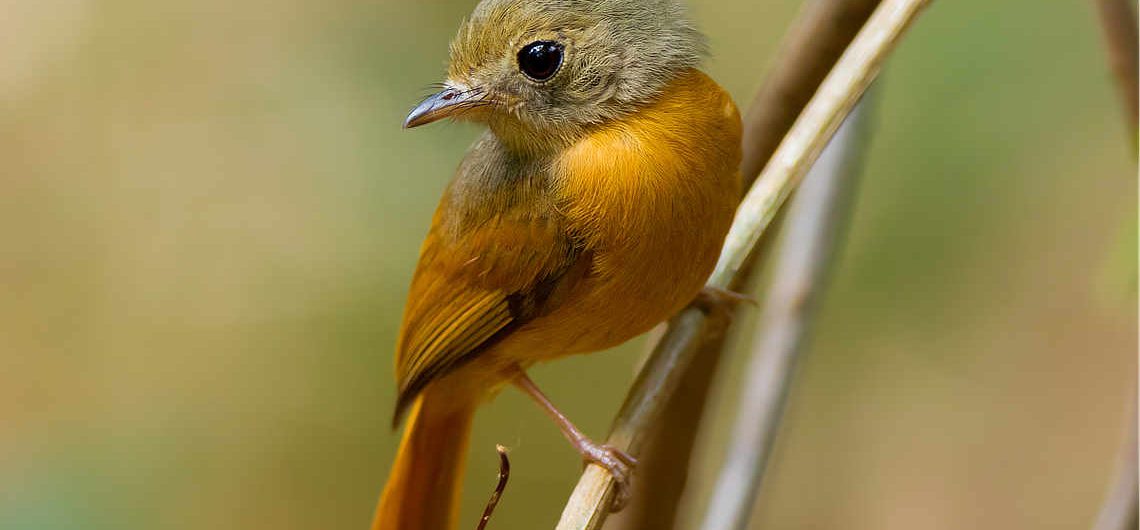Ruddy-tailed Flycatcher
Terenotriccus erythrurus
A tiny flycatcher – only 10 cm in length and weighing only 7 grams – this teeny rainforest dweller is distinguished by its gray head and upper back, bright rufous breast, wings, rump and tail, and buffy lower belly. It has a short, stubby bill with prominent rictal bristles. It appears to have a large, bushy head profile and has large eyes, characteristic among many understory flycatchers that live where light is reduced by canopy cover. Males and females are similar in appearance. It is the only member of its genus, and there are eight recognized subspecies of the Ruddy-tailed Flycatcher; in Panama, T. e. fulvigularis is found.
The Ruddy-tailed Flycatcher is found in the lowland and foothills forests, up to 800 meters elevation, and inhabits lower and middle levels of the forest. It prefers humid lowland forest and secondary growth woodlands. It is usually solitary, but occasionally joins mixed feeding flocks. It is usually first detected by its distinctive call – a high, thin peeee-sit! It vocalizes throughout the day, and often gives repeated calls at dawn. While often seen in the forest understory, the Ruddy-tailed Flycatcher will also perch in the open, and sits very upright. Like many other flycatchers, it takes a sit-and-wait approach to catching insects, sallying out from a branch to catch prey, and particularly favors feeding on leafhoppers (Cicadellidae). Like a few other understory flycatchers, the Ruddy-tailed Flycatcher sometimes does rapid wing lifts, usually both wings at the same time.
Female Ruddy-tailed Flycatchers are responsible for all aspects of breeding – males are not involved in parental care. They do not form pair bonds, even during the breeding season. The female constructs a pear-shaped nest made up of various plant fibers with a semi-concealed side entrance. The nest is placed 2-6 meters above the ground hanging from a twig or vine. She lays two eggs per clutch – eggs are white with brown blotches – and incubates them and cares for young until their independence. Breeding season has been documented as March to May in Costa Rica, and February to August in northwestern Colombia.
The Ruddy-tailed Flycatcher is widespread throughout tropical America, ranging from southeastern Mexico to northern Bolivia and central Brazil. It is common on both slopes of Panama, but absent in the dry Pacific lowlands from Azuero peninsula to western Panama province.
Reclassification: The Ruddy-tailed Flycatcher, along with the Royal Flycatcher and the Myiobius flycatchers, have been placed by some authorities in their own family – Onychorhynchidae – separate from the tyrant flycatchers (AOU, 2018).

